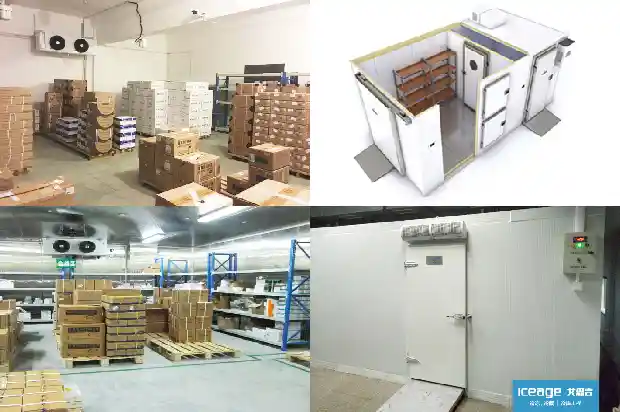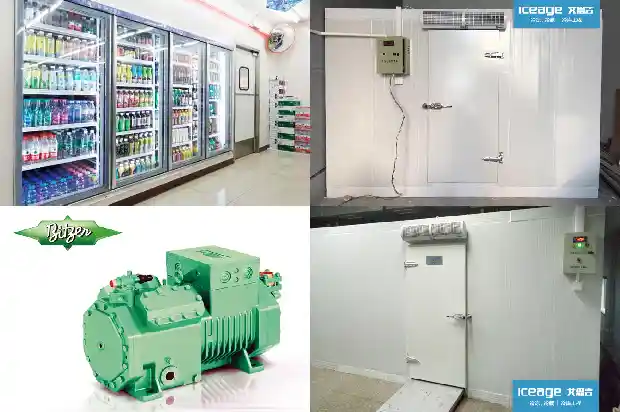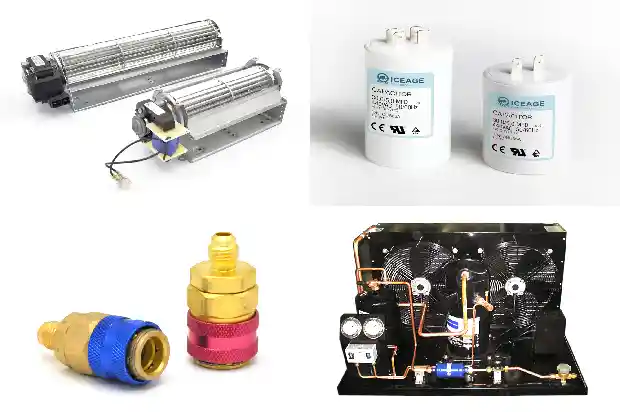Does the Refrigeration System Definitely Need to Be Evacuated? What Will Happen If It Isn't?
2025-02-28
Many colleagues, for the sake of convenience, will skip a process in the installation of the refrigeration system - evacuation.
Many experienced colleagues use the air exhausting method for small systems;
For large systems, they use the method of evacuating with a compressor;
For large systems, they use the method of evacuating with a compressor;
Do you really understand the impact of air on the refrigeration system?
- Overview
Many novice entrants in the field know that the refrigeration system needs to be evacuated. But as for why it must be evacuated?
There are various answers.
"I don't know. That's what the master taught me.
";
"It's not good for the system if air gets mixed into the refrigeration system, right?";
"The air conditioner will consume more electricity.";
"If there is air inside, it is likely to trigger a high-pressure alarm."
Today, Xiaoniba will analyze the impact of the air inside the refrigeration system on the refrigeration system!
Regarding this issue, we need to break down the components of air for analysis.
Nitrogen, oxygen, water vapor, and other components;
The following will introduce the impact of each component of air on the system one by one.

Nitrogen, oxygen, water vapor, and other components;
The following will introduce the impact of each component of air on the system one by one.
- Impact of Nitrogen
Nitrogen is a non-condensable gas. After entering the refrigeration system, it cannot condense in the condenser and will circulate in the refrigeration system along with the flow of the refrigerant.
Nitrogen in the condenser:
The most intuitive manifestation of nitrogen in the refrigeration system is high high pressure:
Since it cannot condense, nitrogen and other substances will occupy the heat exchange area of the condenser, causing the condensing pressure of the refrigeration system to rise, and thus the exhaust pressure to increase;
This further leads to an increase in the exhaust temperature and the compression ratio, and consequently an increase in power consumption.
Nitrogen in the evaporator:
After circulating, nitrogen enters the evaporator and cannot evaporate with the refrigerant; it will also occupy the heat exchange area of the evaporator, preventing the refrigerant from fully evaporating. What will be the result? Let's think about it, guys?
(The evaporator is prone to frosting)
Nitrogen passing through the expansion valve:
Currently, there are no specific literature materials to introduce the impact of nitrogen passing through the throttle valve;
Xiaoniba's analysis is as follows, for reference only;
We all know that if there is refrigerant vapor before entering the expansion valve, the expansion valve is prone to whistling or shaking.
Similarly, when nitrogen enters the expansion valve, on the one hand, it is likely to cause the expansion valve to whistle or shake, and on the other hand, it occupies the flow channel of the refrigerant, reducing the flow rate under the same opening degree, directly affecting the throttling effect of the expansion valve.
- Impact of Oxygen
- Impact on pressure:
Air contains about 20% oxygen. Firstly, like nitrogen, oxygen is also a non-condensable gas. After entering the refrigeration system, it also increases the condensing pressure and exhaust temperature of the system;
The reason is the same as that of nitrogen, so it will not be elaborated here. - Generation of organic substances
Another very important point is that the oxygen in the air will chemically react with the refrigeration oil in the refrigeration system to generate organic substances, which will finally form impurities and enter the refrigeration system, causing adverse consequences such as dirt blockage. - Generation of acid
Oxygen easily reacts with the refrigerant, water vapor, etc. to form acid, oxidizing the refrigeration oil. These acids will damage various components of the refrigeration system and destroy the insulation layer of the motor;
At the same time, these acid products will remain in the refrigeration system. At first, there will be no problems, but over time, it will eventually lead to the damage of the compressor. - Impact of Water Vapor
The mixed air also contains water vapor. I believe that everyone knows the impact of water vapor on the refrigeration system; - Ice blockage
When there is water in the refrigeration system, the first affected part is the throttling structure. When water vapor enters the throttling mechanism, the temperature drops rapidly, and the water reaches the freezing point, forming ice and blocking the small through holes of the throttling structure, resulting in the fault of ice blockage. - Corrosion of pipelines
When water vapor enters the refrigeration system, the water content of the system increases, causing corrosion and blockage of the pipelines and equipment. - Generation of sludge deposits
During the compression process of the compressor, when water vapor encounters high temperature, it will undergo a series of chemical reactions with the refrigeration oil, refrigerant, organic substances, etc., resulting in damage to the motor windings, metal corrosion, and the formation of sludge deposits.
Water vapor + acid + oil = sludge deposits - Conclusion
If the refrigeration system is not evacuated after installation or air is mixed in, it is only harmful to the refrigeration system.
If you want a refrigeration system to have a reasonable service life, it is necessary to ensure that there are no non-condensable gases inside. Although many systems are not completely evacuated or have air mixed in, and the systems can still operate normally for many years, this situation cannot guarantee the reasonable service life of the system, or the operating effect of the system is extremely disproportionate to the operating cost paid by the customer.
Related Articles
- Common Faults in Refrigeration Systems and Handling Methods
- Why Should Refrigeration Shut - off Valves Have "Low - Inlet and High - Outlet" Design?
- Four Requirements for Refrigeration Systems Adopting Two - stage Compression Refrigeration Systems
- Screw Compressor Units: Principles, Design and Selection - Essential Guide for Refrigeration Beginners
- Don't Overlook: The Impact of Capillary Tube Length on Refrigeration System Parameters
- Refrigeration Repair Techniques: A Must - Know - "Sub - cooling" and "Super - heating"
- What Impact Does Pressure Have on the Refrigeration System?
- Advanced Guide! Design and Installation of Refrigeration System Pipelines
- Defrosting Heating Tubes in Refrigeration Devices
- Refrigeration Components of Refrigeration
- Refrigeration System: Copper Pipe Welding and Flushing Operations
- Have You Encountered the Three Common Problems of Refrigeration Compressors?
- How to Calculate Refrigeration Load? And What Are the Issues?
- What to Do if the Compressor of a Frozen and Refrigerated Display Cabinet Runs but the Refrigeration Effect Is Poor?
- Instructions for Welding and Drainage in the Installation of Refrigeration Equipment Pipelines
- Common Pressure Valves and Protection Devices in Refrigeration Units
- Precautions for Using Rotary Refrigeration Compressors
- What Misconceptions Should Be Avoided in Low - temperature Refrigeration System Repairs
